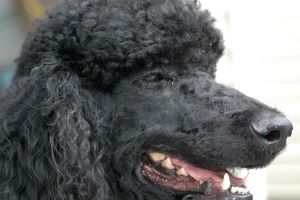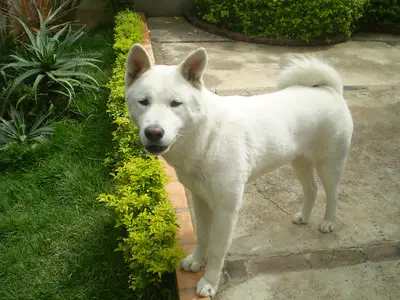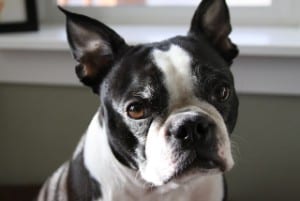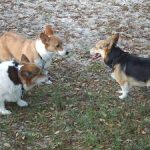
Dreadlocks aren’t as dreading as they sound; as a matter of fact, quite the contrary!
Having those dreadlock cords swaying with the breeze in those park walks (or runs) is a majestic sight to behold, or at least to us, it does.
This begs the question: “Ok, but what about poodles? Can they have dreadlocks?” and thank goodness you asked!
And we bring glad tidings as the answer to that is yes!
In this article, we’ll be going through everything you need to know about dreadlocks, poodles, and everything in between.
So get those reading glasses on, and let’s get untangling the facts.
How can you create dreadlocks on a poodle?
You might think you need some mojo juju or some sophisticated 10-years-of-practice kind of technique.
Well, the good news is, you won’t even have to!
And that’s all thanks to Mother Nature for saving us from all the hair-curling hassle (sighs with relief).
As a matter of fact, dreadlocks or cords naturally form in poodle coats!
However, just because they form naturally, it doesn’t mean that they can be taken care of independently.
As your fluffy poodle’s dreadlocks start to form, it gradually tends to mat. If not properly taken care of, it may lead to coat and skin damage (oh no, absolutely not).
So, to skedaddle from all that fuzz, we’ve compiled 3 things you can do to safely and properly create those dashing dreadlocks (and as always, you’re most welcome).
Don’t groom
As mentioned above, since dreadlocks naturally form over time, it’s vital that you avoid combing your curly pal for a certain time.
How long, you may ask?
It depends on their coat and prior grooming condition, so timelines may vary from one cuddly poodle to another.
However, the best way to tell is when you start feeling the dreads taking shape near the hair shaft’s base close to your poodle’s skin.
Tip-top tip: We highly recommend trimming down hair near your furry pal’s anal area.
This is to prevent feces lingering into the dreads as they begin to grow and form (none of us would want stinky dreads, won’t we?).
Lift and Split
Now, as those dreads start to form and take shape, it’s super crucial to keep those poodle dreadlock cords split to keep your loyal pal from looking like a walking mat (though it does sound cute, it does not look pretty, trust us).
The trick is to use your fingers to split up sections of those dreadlock cords by holding a 1.25-inch section in each of your hands.
Pull one towards you while pulling the other away from you (aka in the opposite direction) and repeat this until you’ve covered your furry buddy’s entire coat.
Is it tiring? Absolutely.
Is it worth it? You bet.
Suppose you’re having trouble maintaining the dreadlock process.
In that case, you can always seek help from a professional groomer, especially when it comes to matted sections that may be hard to deal with on your own.
Caring Consistency
Just like taking care of that cactus plant you’ve made a hobby out of, so do dreadlock cords!
We do recommend you rework those dreadlock cords two to three times a week, especially when dreadlocks begin to take complete shape and also the fact that your tail-wagging poodle needs that rejuvenating bath.
Dreadlock cords need to be as dry as the desert to keep those nasty molds and mildews that may form in your poodle’s coat, and yes, that does mean waiting for a couple of hours.
However, there are ways to help speed up the drying process, that is, if you’re willing to make the investment in large house fans to be directed to your poodle for a dazzling gush of drying wind.
Or you can always patiently wait, no matter how hard it can be.
If you really want to make sure you get those dreads adequately cleaned and dried, then going to a professional groomer for help is definitely the way to go!
There’s no shame in wanting your pal to look fabulous as they rock those dreads in those park walks.
Should Poodle puppies be given dreadlocks?
As adorable and dope as dreadlocks may look, the process itself may not be suited for puppies as their coats are still developing to later be strong and matured enough to safely form dreadlock cords.
This is because the coats of pups and adults are pretty distinct from one another from how it looks and feels.
Most poodle puppies have cotton-soft and wavy hair, while adult poodles have thicker and curly hair.
The only time when poodle pups get to have dreadlocks is by the time they reach 8 months old.
This can be indicated by the coat’s texture (you should be feeling a rough one) as you bathe and comb your adorable poodle.
You know that saying that goes: “Good things take time.”?
Well, you can definitely count poodle dreadlocks in!
Pros and Cons of a poodle having dreads?
Like all coins, there are always two sides in everything, including the ups and downs of getting your poodle those dreadlock cords.
To make your life a whole lot easier, we’ve made a brief breakdown of the pros and cons of getting poodle dreadlocks. If it all sounds good to you, then here it is:
Pros
- Keeps your poodle hair nice, tidy, and fabulous (just like your office space, we hope)
- With the help of professional groomers, dreadlock cords can definitely be .manageable
- Prevents your poodle coats from looking like a four-legged mat (when left untreated with love and dreadlock-ing)
- The process of dreadlocking itself should be pain-free, but be sure to do it carefully and gently to avoid any discomfort, so tell your fluffy poodle to not worry too much!
Cons
- Drying make take an immense amount of time (up to 2 days) as poodle hair is naturally thick and curly (making it denser and harder to dry off than that of those with softer and thinner hair)
- Bathing including both soaking and soap-rinsing those thick and curly hair may take up some time, especially when it comes to rinsing off all the dog shampoo away.
As you can see, weighing both sides can be quite the dilemma, however, when it comes to their happiness in being hassle-free from all that matting, getting those dreadlock cords locked in should be worth all the effort!
Remember, if you feel like giving up, always know that the groomer is just a drive or walk away to save you and your beloved poodle.
How to prevent or handle matting
Taking care of those poodle dreadlocks does take some work, but that doesn’t make it an impossible task!
Here are some of the best ways to keep your puffy poodle’s dreadlocks from matting:
Shampoo + conditioner washes
Bathing your poodle once in 3 weeks with proper shampoo and conditioner should help keep your poodle hair from matting, tangling, and staying dirty (obviously).
Always be sure to check the shampoo contents if your poodle has sensitive skin, and if so, try looking for labels that say “for sensitive skin” or “hypoallergenic”, to prevent unwanted visits to the vet from potential irritations or infections.
Regular professional groomer appointments (worth every penny)
These guys are called professionals for a good reason.
They know every single detail and technique it takes to properly take care of and maintain poodle hair from matting.
Groomers know exactly how to bathe, dry, and trim your poodle with the safest and highest-of-quality products and tools to give your furry pal that edgy and fancy look.
We do recommend visiting your local groomer once every 3 to 6 weeks (at most) for proper maintenance.
A healthy diet equals healthy hair
Believe it or not, your poodle’s diet plays a key role in keeping their hair thick, healthy, and mat-free.
You can do this by simply incorporating high protein and healthy fats (omega-3 and omega-6 fatty acids) into your puffy pal’s daily meal plan.
Healthy fats are also health-beneficial for your poodle’s skin, which also plays a critical factor in preventing matting.
What other breeds have natural dreadlocks?
If you think poodles are the only ones with natural dreadlocks, then you’re in for a surprise. There are actually plenty of other dog breeds who, too, have naturally formed dreadlocks, making poodles part of the dreadlock-rocking pack with many others.
Some breeds do acquire these dreads naturally (without human assistance). In contrast, other breeds (such as poodles) require a little backup to achieve the look. Here’s a shortlist of some of these breeds with dreadlocks:
Breeds with naturally-formed dreads
- Komondor (sounds alpha-ish, don’t you think?)
- Puli
- Bergamesco (a fancy name, indeed)
Breeds requiring human backup to form dreads
- Poodle
- Spanish water dog (no, it does not have the ability to breathe underwater)
- Havanese
Regardless of whatever breed they may be or whether they acquired the dashing dreads naturally or with human assistance, we must say, they’d rock that look any day.






